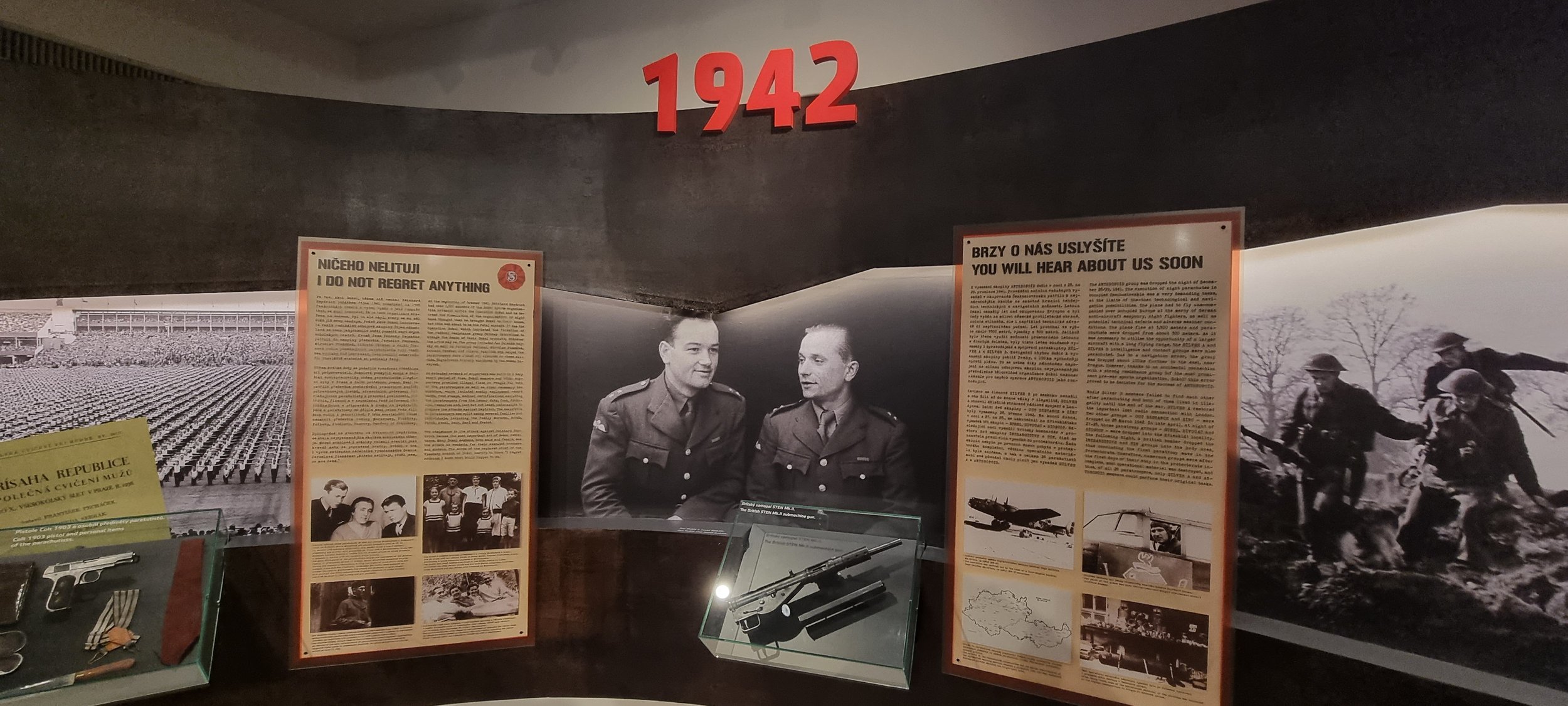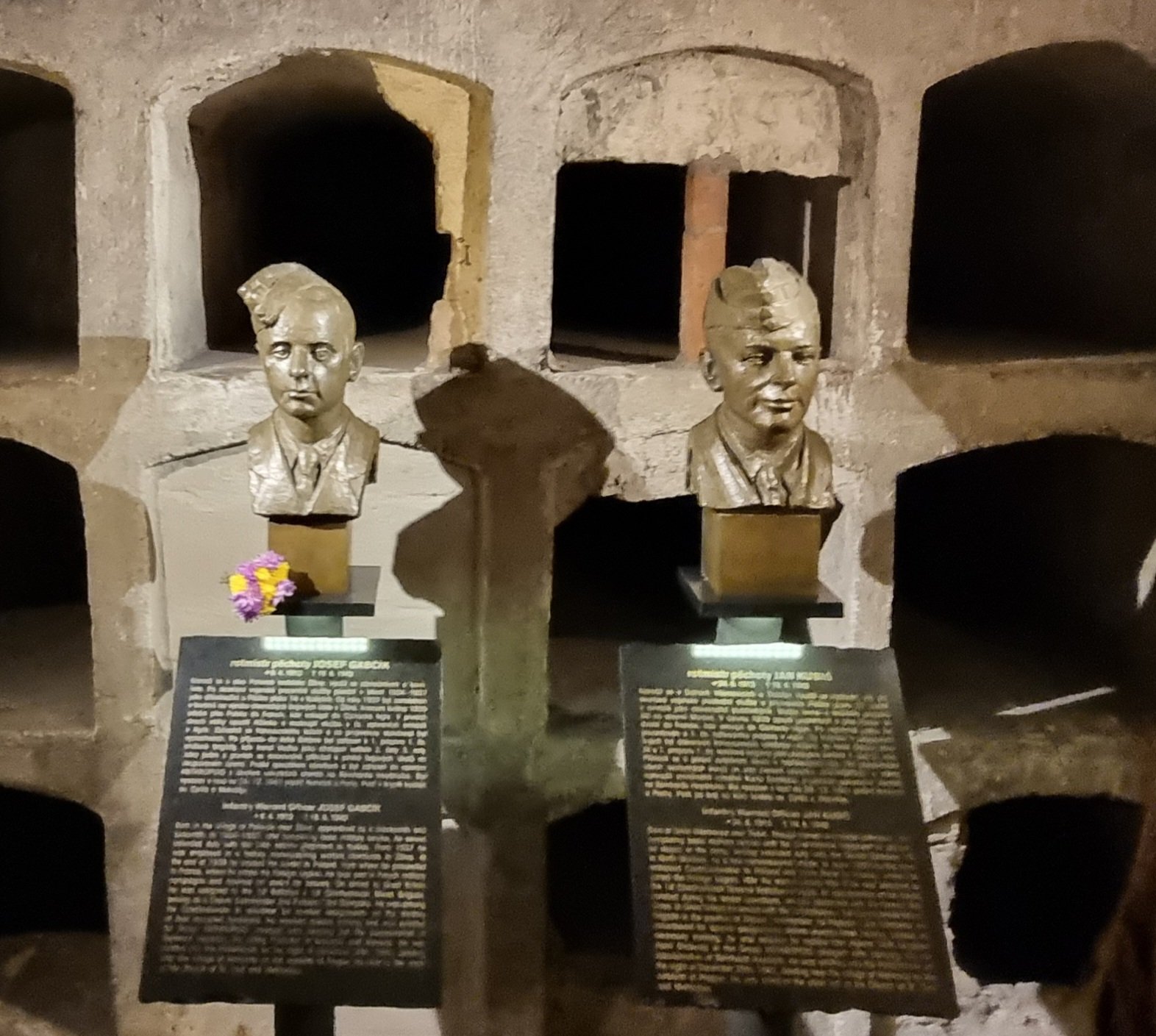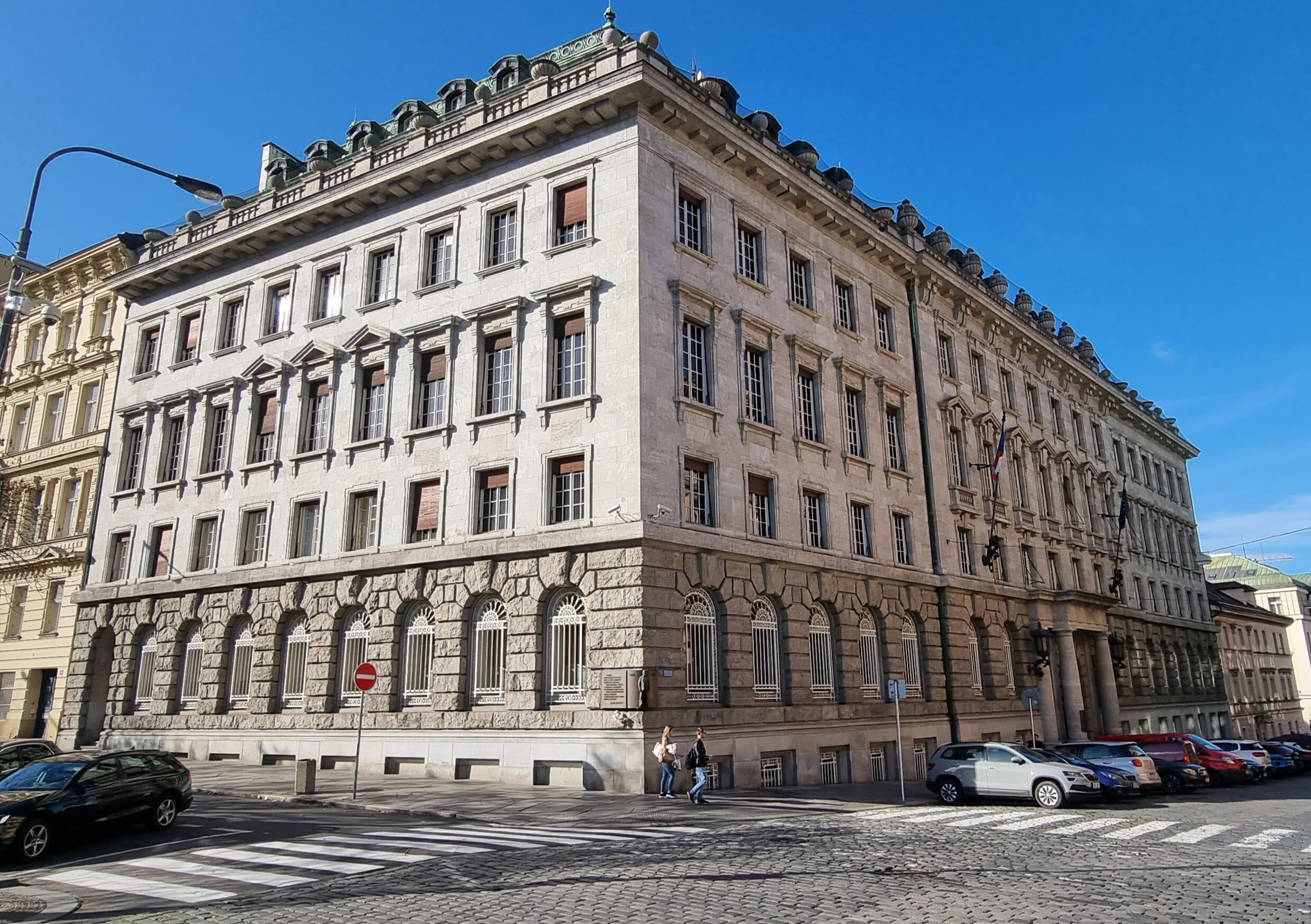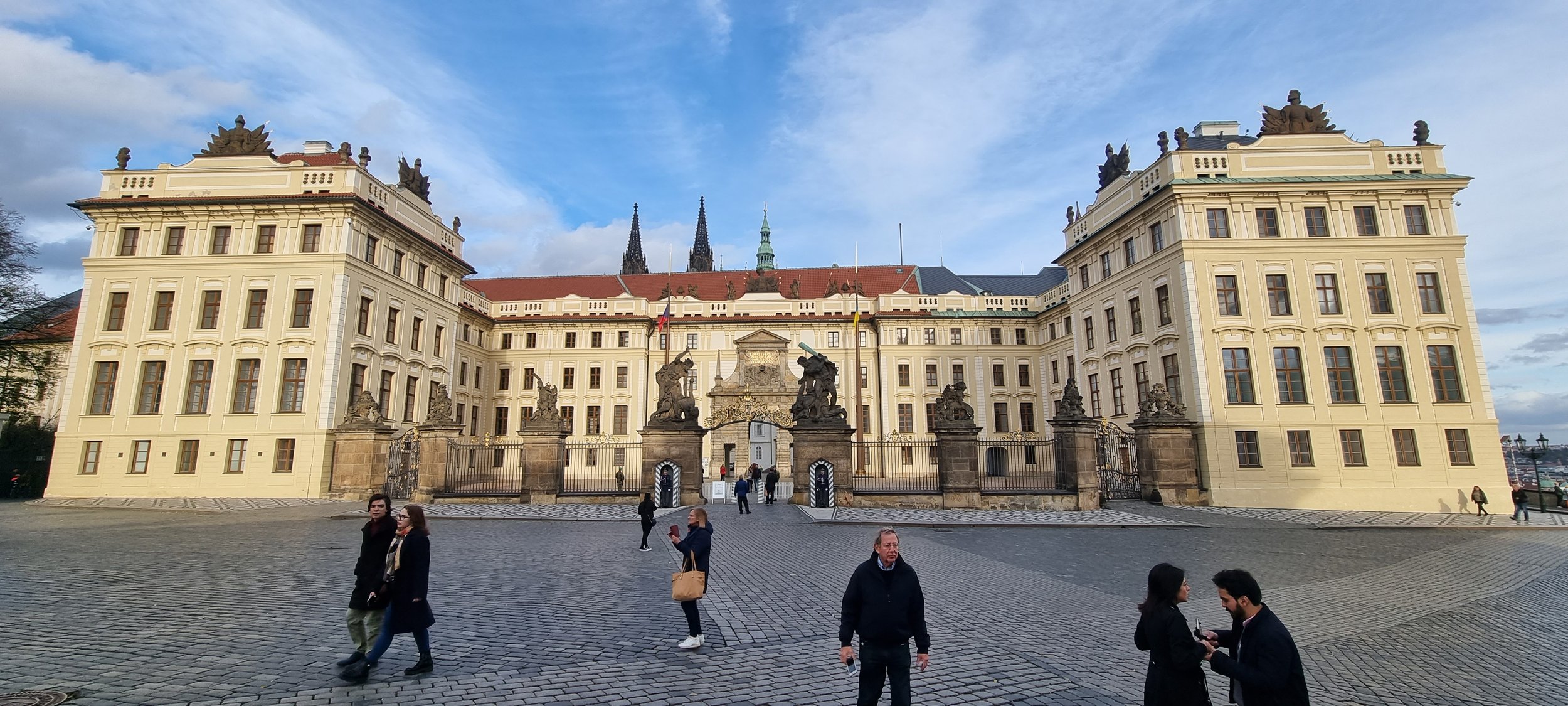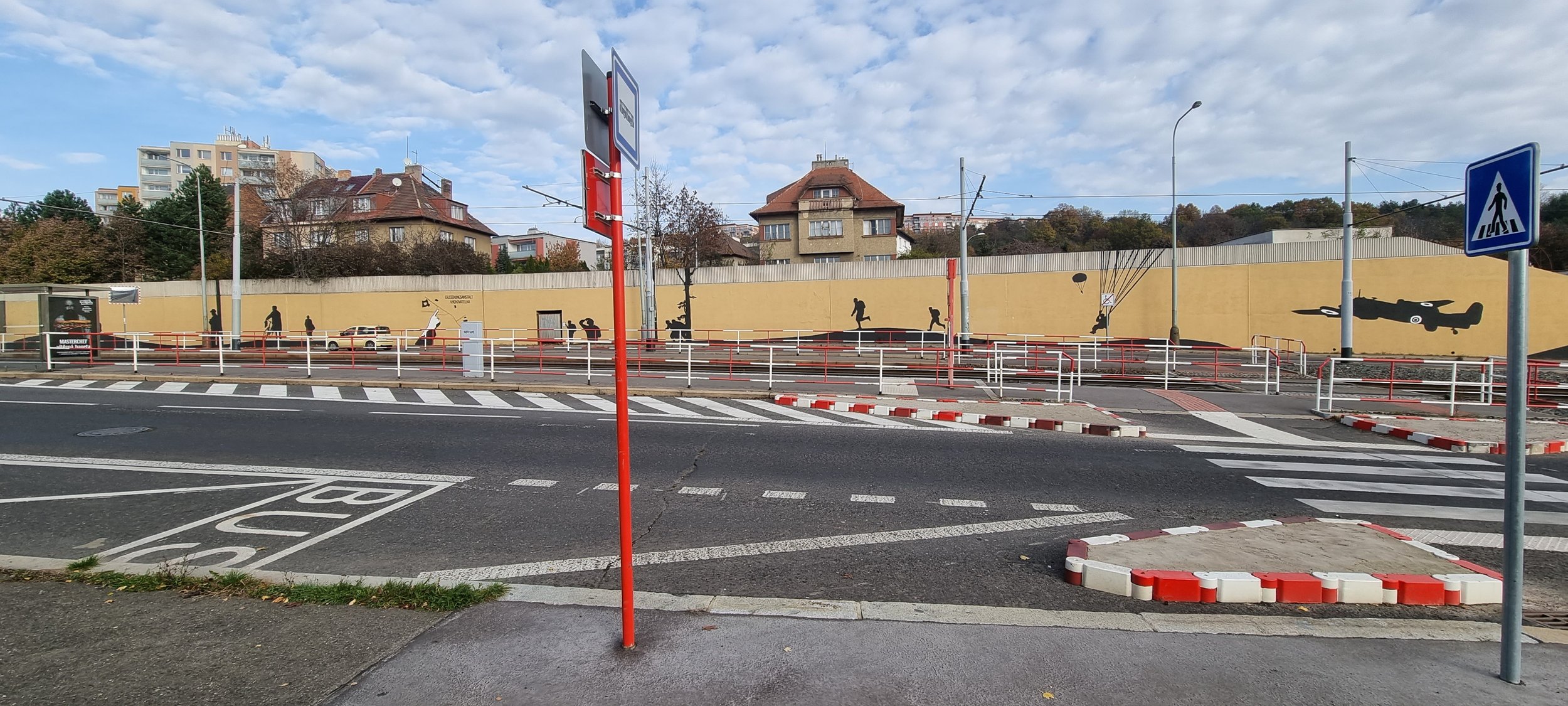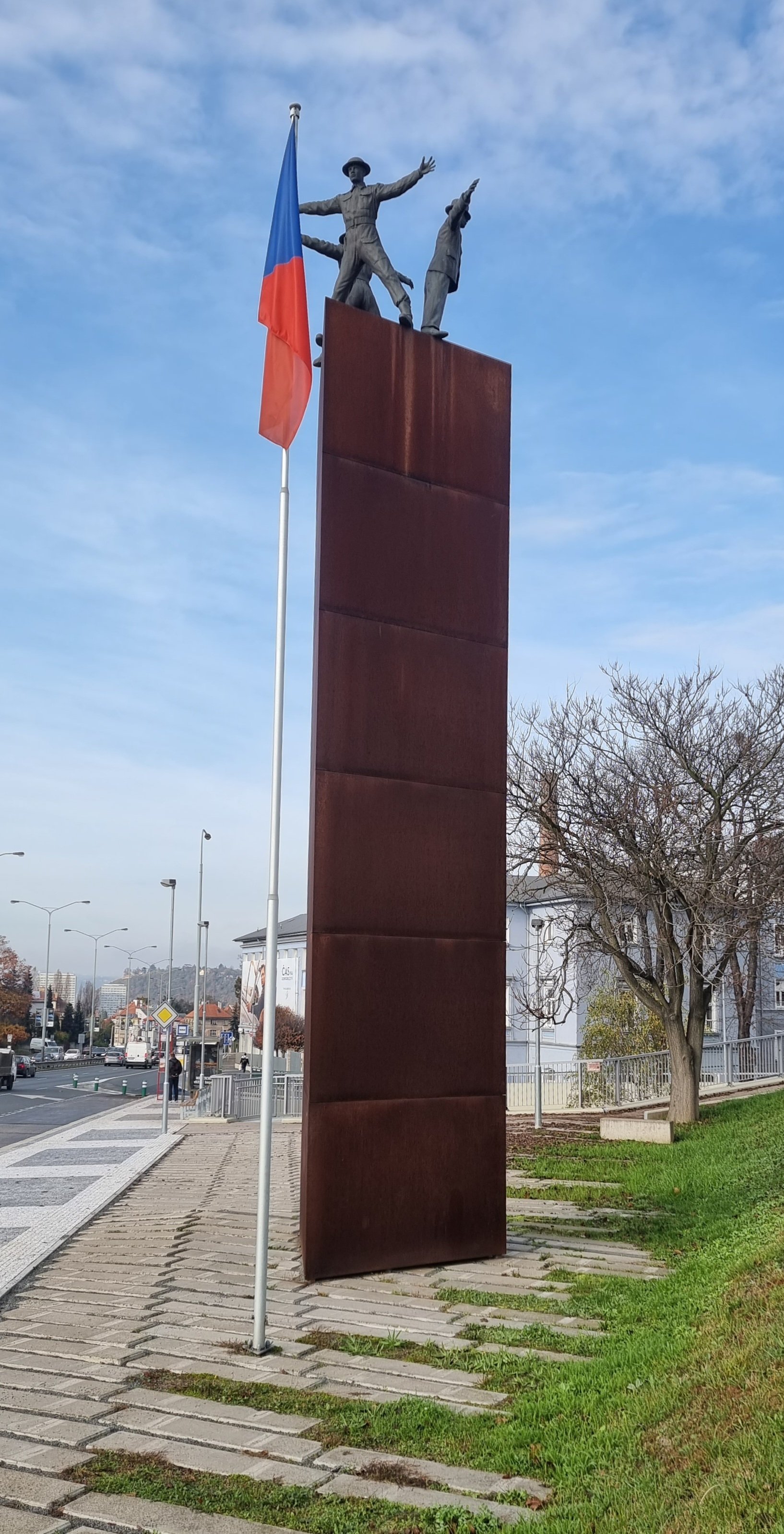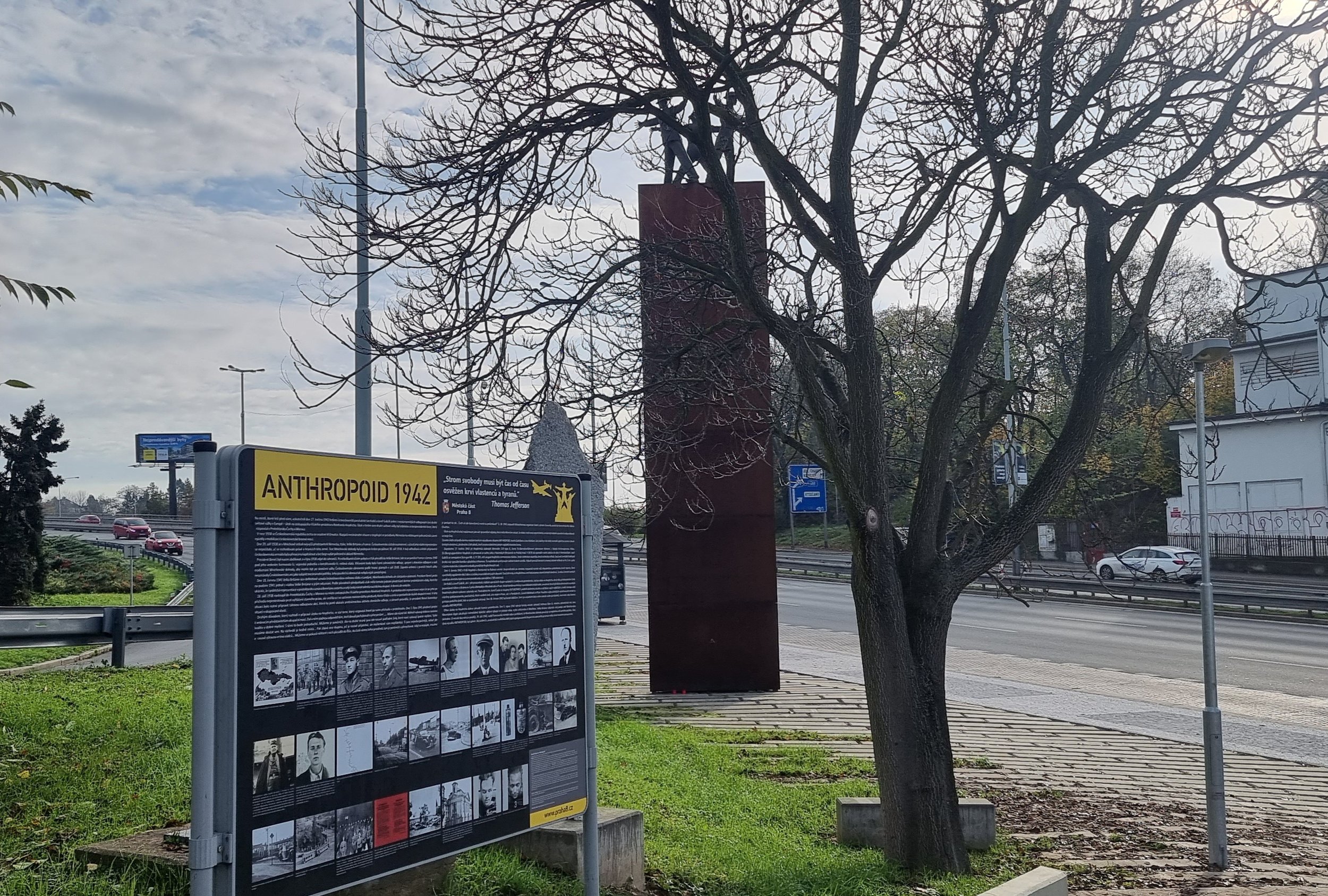
My Photos
Prague & Lidice
Prague to its Victorious Sons is a monument to Czechoslovak legionnaires located in Prague on Náměstí Pod Emauzy. The original monument was the work of Josef Mařatka, but it was destroyed by the Nazis after the occupation of Czechoslovakia. According to the original documentation, a copy of the original statues was created by the sculptor Kateřina Amortová, and the monument was re-unveiled on October 28, 1998, on the occasion of the 80th anniversary of the founding of Czechoslovakia.
The soldiers of Operation Anthropoid, their helpers and the operation itself were memorialized in the Czech Republic and abroad. The oldest memorial is a plaque on the Cathedral of Saints Cyril and Methodius in Resslova Street, Prague.
The National Memorial to the Heroes of the Heydrich Terror was created beneath the Cathedral of Saints Cyril and Methodius in 1995. Later, it underwent significant reconstruction and the extended exposition was reopened in 2010
Jan Kubiš, Josef Gabčík, Josef Bublík, Adolf Opálka’, Josef Valčík, Jaroslav Švarc and Jan Hrubý—avoided immediate capture and eventually took refuge inside a church. And how they fought off hundreds of Nazi soldiers, with machine guns and hand grenades, using only pistols.
The gun battle began in the church above, which the SS attempted to storm in the early hours of the morning. They had been tipped off by Karel Čurda, a fellow British-trained Czechoslovak parachutist who collaborated with the Gestapo in exchange for a new identity and one million Reichsmarks. Today the church functions primarily as a place of worship and is only open to tourists at weekends: the task of commemorating Operation Anthropoid is left to the museum and crypt below.
Downstairs, the atmosphere is sombre. Bronze busts of the seven men who gave their lives stand near the deep stone shafts cut into the wall to hold coffins. It was in this crypt that the paratroopers who remained alive after the initial shootout in the church above entrenched themselves. They managed to hold out for hours against 700 Waffen SS and Gestapo troops who had the building surrounded; in desperation, the Nazis resorted to flooding the basement with fire hoses. Low on ammunition and with the water level rising, the Czech soldiers took their own lives rather than face capture; some shot themselves, others took cyanide.
The once gloomy black building is now the seat of the Office of Trade of the Czech Republic, however between 1939 and 1945, it was the most frightening building in the city.
One single incident on November 24, 1939, the Gestapo executed 120 students accused of anti-Nazi propaganda. In their memory, a small statue is placed in the corner of the building.
It is currently used by the Ministry of Industry and Trade. A plaque attached on the outer wall commemorates the Gestapo victims who were murdered in this building.
The Gestapo headquarters of the Protectorate of Bohemia and Moravia was seated in this building during the Second World War. A large number of Jews and resistance members were interrogated and tortured here.
During the 1938 May Crisis, the square was the site of massive demonstrations against Nazi Germany's demands for the Sudetenland and the appeasement policies of the First Czechoslovak Republic's allies the United Kingdom and France. Under the Protectorate of Bohemia and Moravia, the Nazi occupation force used the street for mass demonstrations. During the Prague Uprising in 1945, a few buildings near the National Museum were destroyed. They were later replaced by department stores.
View from the Astronomical clock -The mediaeval tower clock is located at the southern side of the Old Town Hall Tower. When the clock strikes the hour (from 9.00 a.m. to 11.00 p.m.), the procession of the Twelve Apostles sets in motion.
Charles Bridge is a medieval stone arch bridge that crosses the Vltava river in Prague, Czech Republic. Its construction started in 1357 under the auspices of King Charles IV, and finished in the early 15th century. The bridge replaced the old Judith Bridge built 1158–1172 that had been badly damaged by a flood in 1342. This new bridge was originally called Stone Bridge or Prague Bridge, but has been referred to as "Charles Bridge" since 1870.
In the late 1930s, Adolf Hitler actually spent a night in the Prague Castle. This occurred after the Czech President, Emil Hacha, was forced to hand Czechia over to the Germans. Emil was the third President of Czechoslovakia from 1938-1939 and was in charge during a portion of the infamous War.
During the Nazi occupation of Czechoslovakia in WWII, the castle became the base for Reinhard Heydrich, a high-ranking German SS official who was the chief of the Reich Main Security Office.
Just one year after assuming power in early 1942, Heydrich was attacked during Operation Anthropoid. This operation was an assassination during World War II of Heydrich, carried out by the Czech resistance soldiers. While traveling to the infamous Prague Castle, Heydrich was attacked and later died of his injuries.
As Heydrich’s Mercedes passed through the district of Libeň, two British-trained paratroopers stepped out into the road. Jozef Gabčík, a Slovak, fired on the car, but his gun jammed. His companion, Jan Kubiš, a Czech, threw a grenade. It exploded under the car, injuring Heydrich. The paratroopers made their escape. Heydrich was rushed to hospital, but a week later he died of his wounds.
on the morning of May 27, 1942, Reinhard Heydrich was driving through Prague in an open-top Mercedes. A deputy of Heinrich Himmler and a principal architect of the Holocaust, considered by some a possible successor to Adolf Hitler, Heydrich was also the acting Reichsprotektor of the Protectorate of Bohemia and Moravia, as the Nazi-controlled Czech lands were then known.
The memorial was to be located on the actual site of the assassination. Work on the memorial began immediately thereafter. On 27 May 2009 at 10:35 a.m. – the exact time of the assassination – a celebratory unveiling of the completed memorial was held.
The figures are manufactured from bronze cast from a clay-modelled statue. The column is made of welded steel enclosed by corten steel.
A sculpture from the 1990s by Marie Uchytilová overlooks the site of the old village of Lidice. Entitled "The Memorial to the Children Victims of the War" it comprises 82 bronze statues of children (42 girls and 40 boys) aged 1 to 16, to honour the children who were murdered at Chełmno in the summer of 1942. A cross with a crown of thorns marks the mass grave of the Lidice men. Overlooking the site is a memorial area flanked by a museum and a small exhibition hall.
The memorial, with statues rotated facing forward for 180 degrees, was finally erected in 2000. With a view of the old town of Lidice, it is set in a meadow where the villagers had been killed during the war. In November 2010, a statue of a little girl, which was located right in the foreground, was stolen. Given the considerable public interest an account was opened to collect finances to restore the statue. On this basis it was possible to make a copy and install it to its original position.
Out of a total 503 inhabitants, 307 women and children were sent to a makeshift detention center in a Kladno school. Of these, 184 women and 88 children were deported to concentration camps; 7 children who were considered racially suitable and thus eligible for Germanisation were handed over to SS families, and the rest were sent to the Chełmno extermination camp, where they were gassed to death.
On June 10, wrongly believing that locals were part of the conspiracy, the Nazis massacred an estimated 340 people in the village of Lidice, not far from Prague. All the male inhabitants aged 14 to 84 were killed, and the entire village was burned to the ground. Days later, the Nazis did the same in the central village of Ležáky


